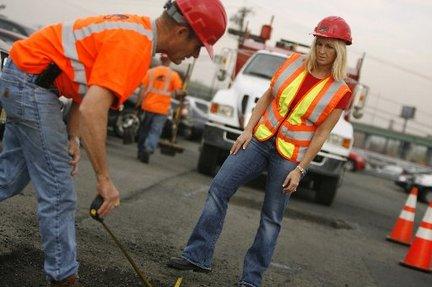
The Feminization of the Public Sector
As a newly appointed intern at a local non-profit organization in the Lehigh Valley (as part of my WGSS Internship this semester with WGSS Director, Prof. Monica Miller) that seeks to empower at-risk youth and families through educational programs and community events, I have had the privilege of attending multiple committee meetings, of which I have learned a great deal thus far. I am struck by, and can’t help to notice the overly-gendered nature of the labor: namely, that all of the social service leaders, including those working in the capacity of child abuse investigation, and on the front lines of college-oriented direct community service, the all of those employed and tasked to do such work, including the Non-Profit Directors, are all female. Being curious about this gendered effect, I discussed my observations with my supervisor and, among other disparate realities, we discussed the underlying, and often concealed yet explicit assumption that women are more caring and good at nurturing, expectations that are both external to women’s labor, as well as an internalized norm among women more generally. I was still curious, and wanted to dig deeper. This social reality, and social norm disturbed me, and I was not satisfied with the answers, or just simply accepting such a reality. So, I went ahead and did some additional research and follow-up. Boom! This is actually a “thing” in the world in which we live. For instance, we know well that:
Historically, the state and local public sectors have provided more equitable opportunities for women and people of color.
As a result, women and African Americans constitute a disproportionately large share of the state and local public-sector workforce.
In comparison to private businesses, the public sector, on the whole, hires more women and people of color. What’s more, according to research, there is a smaller wage gap across both gender and ethnicity in employment on the state and/or local level, including public sector agencies as well as non-profits. In other words, the demographic of women and people of color are expected to take up employment that reifies and intensifies a social norm already so ever-present: labor-intensive work that remains tethered to service of the “nurturing” kind. And this type of work in the public sector is expected to comparatively yield a more “equitable” life option? The contradictions here are neither concealed nor persuasive, but more than that, they are problematic and often have tragic outcomes on the well being of marginalized groups. Unfortunately, that’s not how it ought to work.
Remember the “Great Recession” of 2012? Among the millions of Americans who struggled through it and lost their jobs, workers at non-profits and the government were hit even harder. This is, however, not surprising, as we know all too well that disparate impacts of all kinds affects marginalized groups disproportionately. In other words, to put it another way, a sneeze for one, means pneumonia for many others. In fact, during this recession, 70% of women and 20% of African Americans experienced job losses in the public sector alone. Moreover, after 2012, decline in employment remained a hard-hitting reality in the public sector while the private sector slowly recovered and experienced net increases in employment. Thus, for women and people of color in particular, gainful employment in the public sector, although important work for social change, can often exacerbate income inequality during social, economic, and political moments of difficulty, and, maintains long-standing stereotypical assumptions about the “role” marginalized groups play in American society.
So, in asking why we as a society have so many female leaders in the public sector and non-profit, we must have a working sense of how gender stereotypes work in society. Our social reality is such that women tend to outnumber men in professions deemed traditionally “caring” such as, nursing, social work and education. That is to say, such professions are often framed (and viewed) as “feminine” whereas the male-dominated private sector, especially in fields like engineering, women are assumed to be too bossy and demanding, not “efficient” enough (i.e., a rubric often used to suggest that a “worker” is one who compartmentalizes their “whole” self) and unable to demonstrate “professionalism” as their male counterparts. So, men make the big bucks and women and people of color are expected to act in the role of social missionaries, caring for those at the bottom of the social latter?
A better narrative, and example, for a “Democratic” society is desperately needed and in order. Women and people of color alike have certainly come a long way in making social gains and attaining civil rights – from the right to vote to opportunities for higher education – yet, much more affirmative work is needed. Although our society has changed for the better in the past fifty years, women, for example, still earn only 76 cents for every dollar a man earns (a staggering number further complicated by race) – this is unacceptable and such a gap reinforces a false assumption that men are more capable than women, that men are to be the moneymakers, and women are to be nurturers. And, we must also keep in mind that equitable treatment and opportunity in employment for women and people of color doesn’t mean an “end” to discriminatory issues affecting American society. Quantitative equity doesn’t neatly translate into social equality, but for the sake of our future, it is a good starting place. One issue cannot be tackled without attention to the other – this is not solely a women issue, or a people of color issue, it is a staggering reality that is intersectional and thus requires attention to all facets of identity in order to begin understanding it more fully, and finding long-standing resolutions to disparities that have persisted for far too long.
